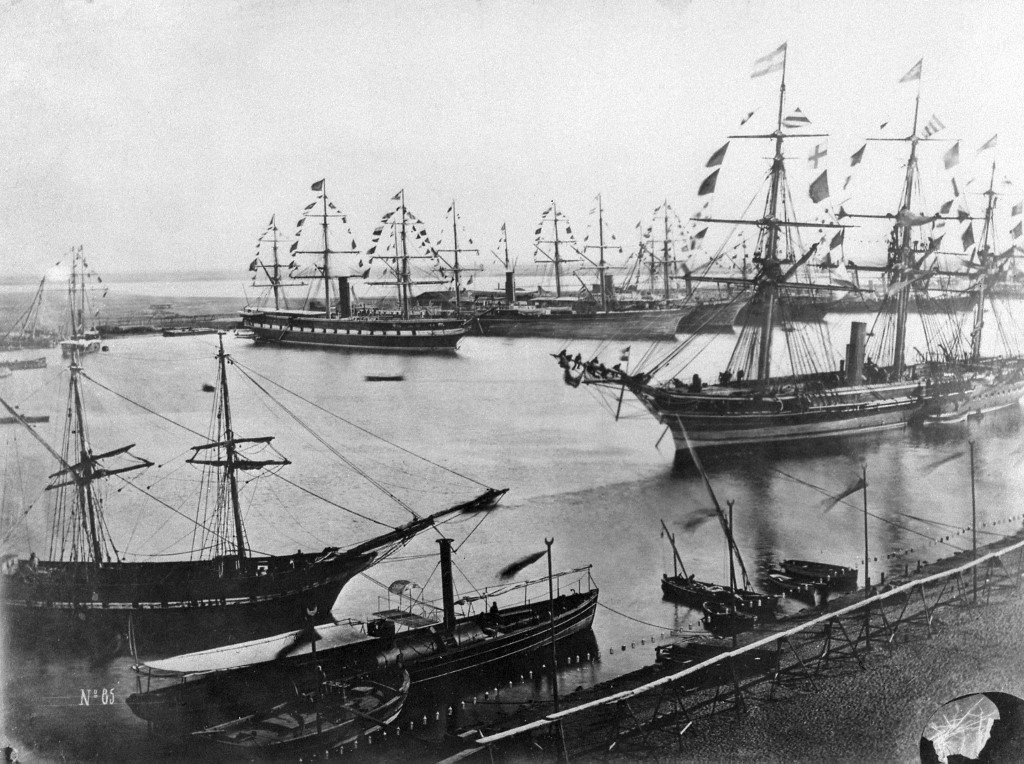Suez

The ship getting stuck in the Suez Canal was a moment that forced the world to actually think about global supply chains, the transportation networks that tie the economy together, and about the Suez Canal itself. The historian of Egypt Aaron Jakes has a good piece on the history of the Suez Canal that places these recent events in some really valuable context.
At a moment when the United States was beginning its slow turn to war over capitalism’s dependence on slavery, the corvée was a peculiar mix of free and unfree labor: it was a tax collected in labor time. Beyond what they paid in cash or produce for the right to cultivate their land, Egyptian peasants owed a portion of each year to toil on “public works” of the government’s choosing.
This arrangement made the Suez Canal into something more than a channel for hastening global commerce: it became a small revolution in how labor in one place became money elsewhere. Through the terms of the concession, this massive infrastructural project also became a mechanism for turning taxes in one locale—often extracted at the point of a gun—into subsidized profits on financial instruments traded somewhere else. In the following decades, “credit enhancements” of this kind would play an increasingly prominent role in the financing of colonial infrastructures, mostly notably the Indian railways.
If the project had once seemed to promise increased revenue to advance Egypt’s political autonomy and economic development, it backfired in spectacular fashion. Despite the extraordinarily generous terms of the concessionary agreement, de Lesseps ultimately struggled to find buyers for shares in his Compagnie Universelle du Canal Maritime de Suez. Having toured Europe promoting the Canal as a benefit to all mankind, de Lesseps had hoped to subscribe thousands of investors in his “universal company.” But this method of assembling capital through a mass subscription of small shares was as novel as the engineering feat itself, and most who heard the pitch deemed it too expensive and too risky. Others outside of France still considered it a distinctly French project serving narrowly French interests. Confident in de Lesseps’s talents as a salesman, Said had committed to purchase any unsubscribed shares. When de Lesseps came up short, he was forced to honor the agreement and purchase the remainder. That huge, unanticipated outlay on the Canal quickly outstripped what the Egyptian government could cover, draconian efforts to extract more revenue from the countryside notwithstanding.
This tipped the financial balance in Europe’s favor, an outcome that would have a disastrous political outcome for Egypt as well. To meet the ballooning budgetary shortfall, Said and his successor Ismail resorted to a series of loans from banks in the major financial centers of Europe. A short-lived boom in global cotton prices during the American Civil War allowed Egypt to borrow against the inflated revenues of its cotton crop, but once the war ended and prices fell, the burden became unsustainable. By the late 1860s, Ismail’s government was contracting new loans, on increasingly extortionate terms, to cover those earlier debts. Scrambling to keep up with the payments, in 1875 Ismail made a desperate gambit to buy time by selling Egypt’s shares in the Canal to the British Government.
It was too little too late. The following year, Egypt defaulted on its loans. Representatives of the foreign bondholders took control of the state’s finances and imposed what we would now call austerity measures. The cuts were wildly unpopular, and by the early 1880s, public outrage had coalesced into a broad-based movement for constitutional rule and a return to fiscal sovereignty. Fearing that if that movement succeeded, Egypt would halt payment on its debts, the British found pretext in 1882 to occupy the country. A new staff of British “advisers” thereafter worked to ensure that roughly half of Egypt’s annual tax revenue was remitted promptly to the foreign bondholders. The British Treasury, meanwhile, had become the single largest shareholder in the Suez Canal Company and was thereby able to employ the growing profits on traffic through a waterway in Egypt to defray budgetary costs to taxpayers in Britain.


